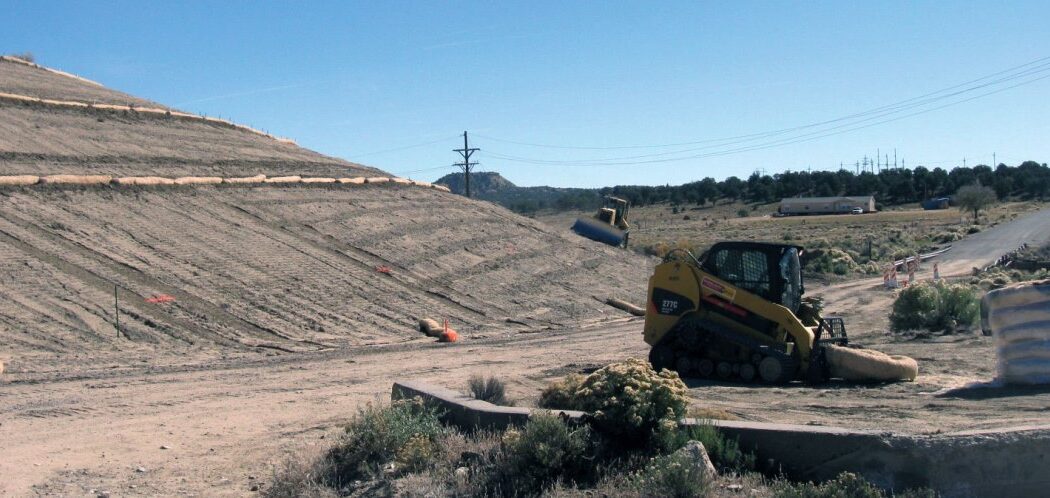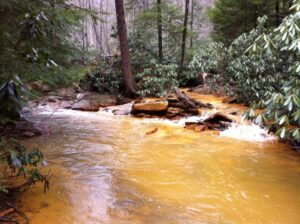Millions of Americans nationwide live within just one mile of an abandoned coal mine or orphaned oil and gas well.
The Bipartisan Infrastructure Law’s $16 billion historic investment in legacy pollution to address both of these issues is creating new opportunities for economic and environmental revitalization across the country. This is the kind of funding that would work well with the new revitalization and resilience-building tools now being offered by the RISING PLACES initiative.
Now, on October 26, 2022, it was announced that $74 million from the Bipartisan Infrastructure Law would go towards creating well-paid union jobs and catalyze economic opportunity by reclaiming abandoned mine lands (AML) in Maryland, Ohio and Virginia.
This is in addition to recent awards of nearly $245 million to Pennsylvania and more than $74 million to Kentucky.
AML reclamation projects support jobs in coal communities by investing in projects that close dangerous mine shafts, reclaim unstable slopes, improve water quality by treating acid mine drainage, and restore water supplies damaged by mining.
AML reclamation projects also enable economic revitalization by reclaiming hazardous land for recreational facilities and other economic redevelopment uses like advanced manufacturing and renewable energy deployment. As required by the Bipartisan Infrastructure Law, funding will prioritize projects that employ dislocated coal industry workers.
The state awards are below:
Maryland: $4,811,551
Ohio: $46,443,789
Virginia: $22,790,474
Total: $74,045,814
AML funding will enable states to remediate abandoned mines that are leaking methane – a key contributor to climate change. This comes as part of the Biden-Harris administration’s unprecedented investments in coal, oil and gas and power plant communities.
This effort also advances the President’s Justice40 Initiative, which commits to delivering 40% of the benefits of certain climate and clean energy investments to disadvantaged communities.
As required by the Bipartisan Infrastructure Law, allocations are determined based on the number of tons of coal historically produced in each state or on Indian lands before August 3, 1977, when the Surface Mining Control and Reclamation Act of 1977 (SMCRA) was enacted.
States are guaranteed at least $20 million over the 15-year life of the program if their inventory of AML sites would cost more than $20 million to address. As state AML inventories are updated, future distributions will change.
These investments supplement traditional annual AML grants, which are funded by coal operators and ensured to be provided through 2034 thanks to language in the Bipartisan Infrastructure Law. Under the AML reclamation program, OSMRE has provided more than $8 billion to reclaim lands and waters that were mined or affected by mining prior to 1977, when SMCRA was enacted by Congress.
“Thanks to President Biden’s Bipartisan Infrastructure Law, we have a once-in-a-generation investment to address legacy pollution. The reclamation landscape of tomorrow presents endless opportunities for innovation, efficiency and partnership,” said Secretary Deb Haaland.
“These funds will support vitally needed jobs, creating opportunity for local workers in their own communities. And once these sites are cleaned up, they become part of the foundation for new economic development,” she added.
The Department of the Interior has made $725 million available to 22 states and the Navajo Nation in Fiscal Year 2022 and will award funding to eligible entities on a rolling basis as they apply.
The Bipartisan Infrastructure Law allocates a total of $11.3 billion in AML funding over 15 years, facilitated by the Office of Surface Mining Reclamation and Enforcement (OSMRE).
This historic funding is expected to address the vast majority of inventoried abandoned coal mine lands in this country, which will help communities eliminate dangerous environmental conditions and pollution caused by past coal mining.
Photos are courtesy of U.S. EPA.


